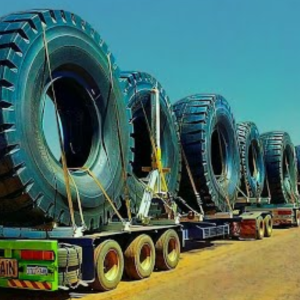
Before Henry Ford built his car for the masses, the Model T, he produced a machine for the sporting crowd with his six-cylinder, 40-horsepower Model K.

There are a few popular myths, or misunderstandings if you will, surrounding Henry Ford (pictured in the driver’s seat above) and his six-cylinder Model K of 1906-08. As the story is often told, the Model K was a large, expensive automobile that failed to thrive in the marketplace, and this experience gave Ford a lifelong dislike of six-cylinder engines and a disdain the high-priced market in general. However, a closer look at the facts reveals a more interesting story.

First, the Model K wasn’t really such a high-priced car. At $2500, later bumped up to $2800, it was considerably more expensive than Ford’s $850 Model T that appeared in the autumn of 1908. But the Model K was still far cheaper than the popular premium cars of the day including Packard, Pope-Toledo, or Thomas, which all sold for $4,000 to $5,000 and more. So the prevailing view of the Model K as a high-priced luxury car is at least an over-generalization. Really, it was more of a mid-priced car. Next, it wasn’t that big or heavy. With a wheelbase of 114 inches and a curb weight of 2500 lbs, the Model K was svelte for a car of its class.

A closer look at the engine can tell us what the car was really about. Sixes were quite rare in the USA when the Model K was introduced in 1906, and this no doubt was the product’s chief selling point. The individually cast cylinders each sported a 4.50-inch bore and 4.25-inch stroke, yielding a total displacement of 405 cubic inches. Output was nominally rated at 40 horsepower and the maximum speed was a blazing 50 mph. What the Model K offered was a lot of engine at a relatively low price—maximum bang for the buck. As Ford noted in an item in The Automobile on June 7, 1906, a six could be both lighter and more powerful than a four of similar displacement.
To help sell the performance story, Ford campaigned a race car (or a number of them, it seems) based on the production Model K under the name 666. The 666 racer enjoyed some success, but in September of 1907 it nearly killed Ford’s top technician and driver Frank Kulick when it plunged through a fence at the State Fairgrounds in Detroit and tossed him 60 feet through the air. The frightening wreck soured Ford on using racing to promote his company’s products, at least for a time.
The Model K was offered for three years, 1906 through 1908, with only minimal changes. For 1907, a single magneto ignition system replaced the original twin setup, as Ford dryly noted that the extra ignition simply added cost, complexity, and additional parts to fail without addressing the actual problem: spark-plug fouling. Far from a failure, the Model K actually provided the bulk of the company’s profits for a time, allowing Ford to pursue his greater goals, the low-priced N, R, and S Models, and his ultimate breakthrough the world-changing Model T. The Model K was a successful car overall, but with his Model T, we could say Ford had a better idea.






